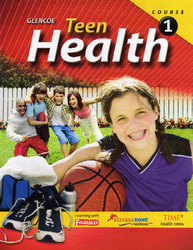
Teen Health Course 1Chapter 12: Safety and The EnvironmentStudent Web Activities - Teacher CenterLesson 4 Answers 1. The six steps you need to go through to prepare for an emergency are:
2. A “family contact” is an out-of-town friend that each person can call in case of an emergency. It is important to have one because sometimes long distance calls are easier to make than local calls. The family contact can also keep in touch with everyone if you get separated. 3. The six things you need to have in an emergency kit are:
4. Keep a three-day supply of water for each person (each person needs two quarts for drinking and two quarts for food preparation and sanitation). 5. Some examples of the kind of medical training that might help if you were caught in an emergency situation include:
Additional Resources for Teachers Below are some additional resources on how to get prepared for an emergency. It would be good practice to have students call the local Red Cross and/or community center to see what kind of classes are offered and when. If any students have already had emergency training, ask them to share what they learned and what they thought of the training.
Lesson 6 Answers 1. Global warming:
2. The exhaust from cars causes air pollution. 3. Creatures that live in water become sick and/or die when water become polluted. 4. One of the most important things that plants produce is oxygen. 5. Deforestation results in:
Additional Resources for Teachers Below are some additional resources that will help teens understand the environment and what they can do to help. Some of the quizzes on these sites are both entertaining and informative. Another activity that might be interesting is to have students research and write about someone who is involved in conservation or environmental protection.
|  |















